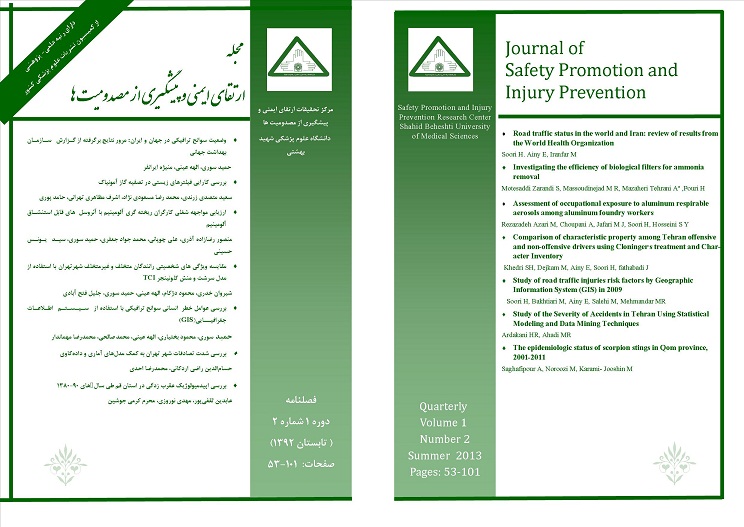...
ارتقای ایمنی و پیشگیری از مصدومیت ها,
دوره 1 شماره 2 (2013),
7 شهریور 2013
,
صفحه 95 -101
https://doi.org/10.22037/meipm.v1i2.4977
چکیده
Backgrounds and Aims: In the tropical regions of Iran, scorpion stings are one of the most important medical and health problems. Knowing about their epidemiologic aspects might lead to the employment of appropriate preventive methods. Therefore, these studies were done in Qom province for this purpose.
Materials and Methods: This research is a descriptive cross-sectional study which has been done in all of the urban and rural areas of Qom province from 2001 to 2011, and all the cases which were referred to the only available hospital were assessed, examined, treated and subsequently followed. Finally, a questionnaire including demographic, epidemiologic and clinical data was completed for the patients. Chi square tests were used for the evaluation of the hypothesis.
Results: In total, 790 cases of scorpion stings were referred to the hospital during the period of study. Most of the cases were males (60.25%) in the 10-24 age groups. The most cases occurred during spring and summer. Hands and feet were the most common location of scorpion stings. 18.7 % of envenomed cases were due to black scorpions. 74.4 % of cases were from rural regions. 77.2% of the sufferers slept outdoors and on the ground. 20.5% of cases were surrounded by timber, dust and building materials.
Conclusion: Based on these findings, scorpion stings are considered a public health problem in Qom province. Consequently, it is necessary to introduce health education programs for personal protection, in order to prevent possible injuries from scorpions, especially for the boy students that reside in rural areas. Also the villagers should use proper beds to sleep in the outdoors.
How to cite this article: Saghafipour A, Noroozi M, Karami Jooshin M. The Epidemiologic Status of Scorpion Stings in Qom Province, 2001-2011. Irtiqa Imini Pishgiri Masdumiyat (Safety Promotion and Injury Prevention).2013; 1(3):95-101.
- Scorpion Sting
- Epidemiology
- Qom
ارجاع به مقاله
- چکیده مشاهده شده: 460 بار
- PDF (English) دانلود شده: 326 بار
- PDF دانلود شده: 59 بار
